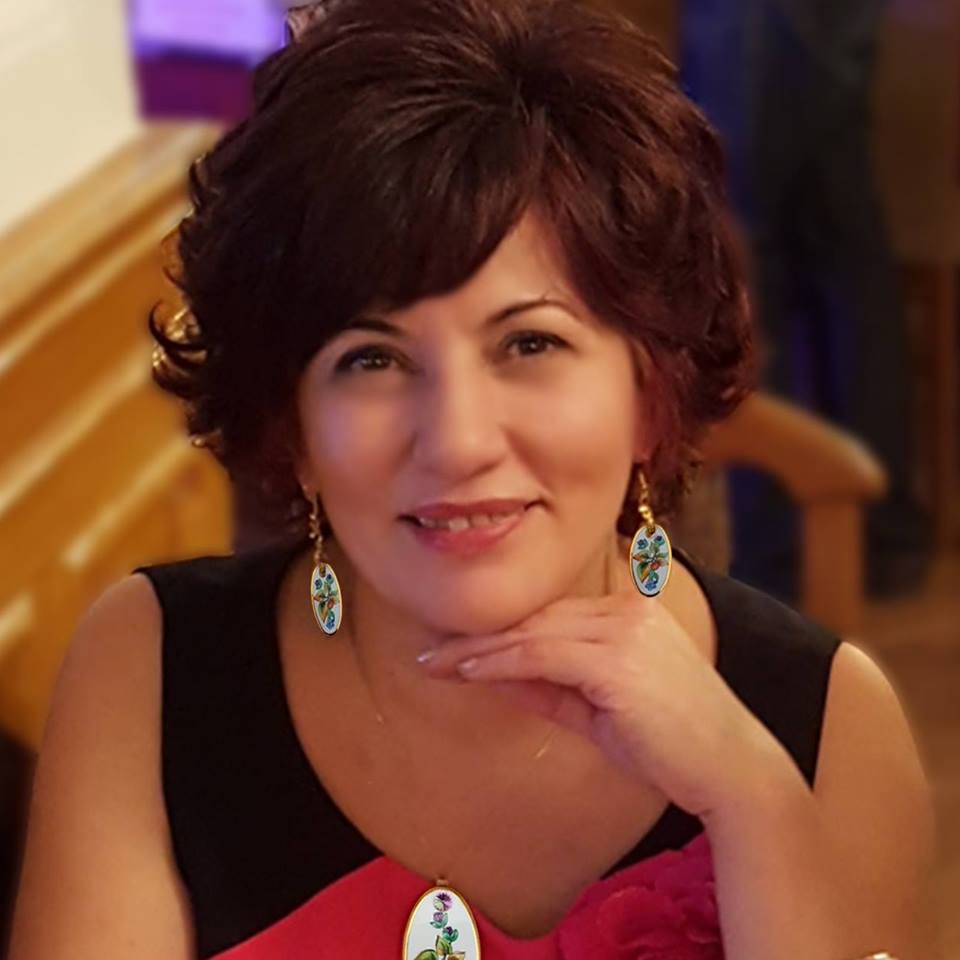
Visual artist, director of a castle museum, chairwoman of the Endre Szász Foundation, and homeopath. We asked Katalin Szászné Hajdu about visual arts, women in art, and her tasks. Interview by Enikő Enzsöl.
This article was originally published on our sister-site, Ungarn Heute.
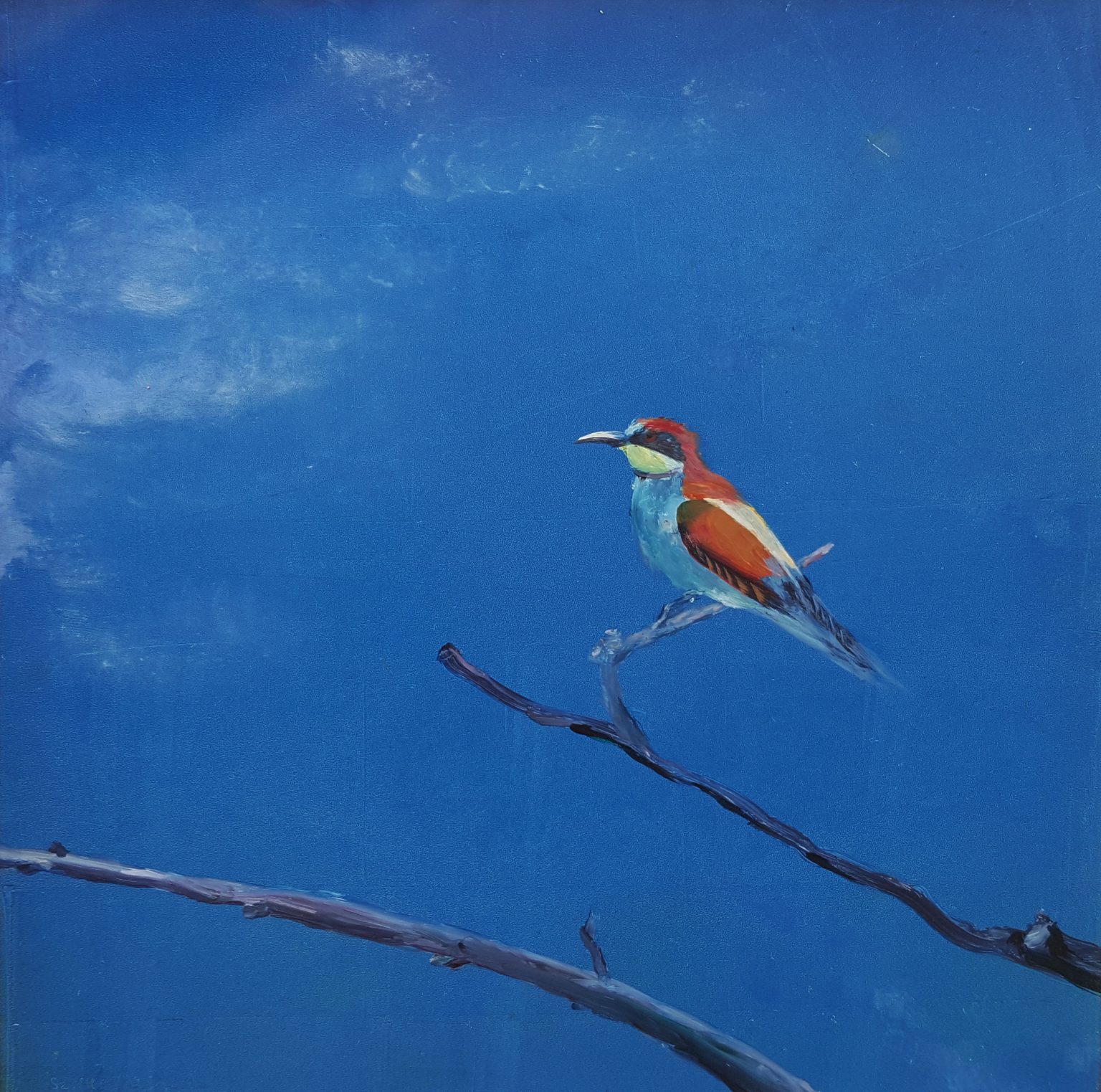
Katalin Szászné Hajdu: Bee-eater
Katalin Szászné Hajdu is usually associated with Endre Szász‘s widow, who continues her husband’s dreams as the executor of his estate. But it is less talked about that you are also an artist who works in a completely different style. What led you to this profession? How did you become an artist?
My interest in art began at a very young age. Of course, most children like to paint and draw, but I knew very early on that I wanted to pursue this profession. As a child, I was fascinated by the different tapestry patterns and wondered how they were made. At that time I did not know that there were different techniques: some are woven, some are painted, and some are printed. When I was seven years old, I registered with the Municipal Artists’ Circle in Hajdúszoboszló, which was divided into age groups starting from kindergarten, offering opportunities to create. Until I was an adult, I continued to go there and to the summer art camps. Borbála Fekete, the leading artist of the artist circle, who was a painter, sent my paintings (which she thought were good), to national and international exhibitions. I had some successes, as I won a silver medal at an international youth competition in India, but also prizes in the GDR, for example. Meeting Endre Szász was – although they say that there are no coincidences – a coincidence. My mother was also an innkeeper in Hajdúszoboszló, she rented rooms, and we had guests who worked as porcelain painters in Hollóháza. They saw my paintings on the walls and noticed that I painted and drew beautifully. They suggested I apply to the painting circle that Endre Szász had founded and started to organize in Hollóháza at that time. Upon encouragement, I made an appointment and brought a selection of my works. Endre Szász told me at the meeting that he thought I was talented. He explained to me what he was planning in Hollóháza, and what we could work on together. For 20 years we created porcelain plates, vases, and ornaments together according to his designs, under his artistic and spiritual guidance. I continue this line until today: I work with Endre Szász’s motifs on decorative objects and porcelain, and I also make jewelry and clothing according to his designs, so I am still a creator. I do not draw a rigid line between his work and mine, I love them all because they are creative.
Nowadays, it is often said that women’s career prospects used to be limited and that they had fewer opportunities to succeed than their male colleagues. What are your personal experiences with this? Was it really more difficult to be a woman, an artist- a visual artist- a few decades ago?
I have not thought about this yet. In my opinion, everyone is an individual and can find their own subject and interests, as well as the right clientele and those who are interested in what you create. Regardless of gender, if artists create something that is in demand and in which people see imagination, it will give them confirmation and drive in their artistic career. Of course, it is another question who wants what kind of career, what a career means to someone, world fame or low recognition.
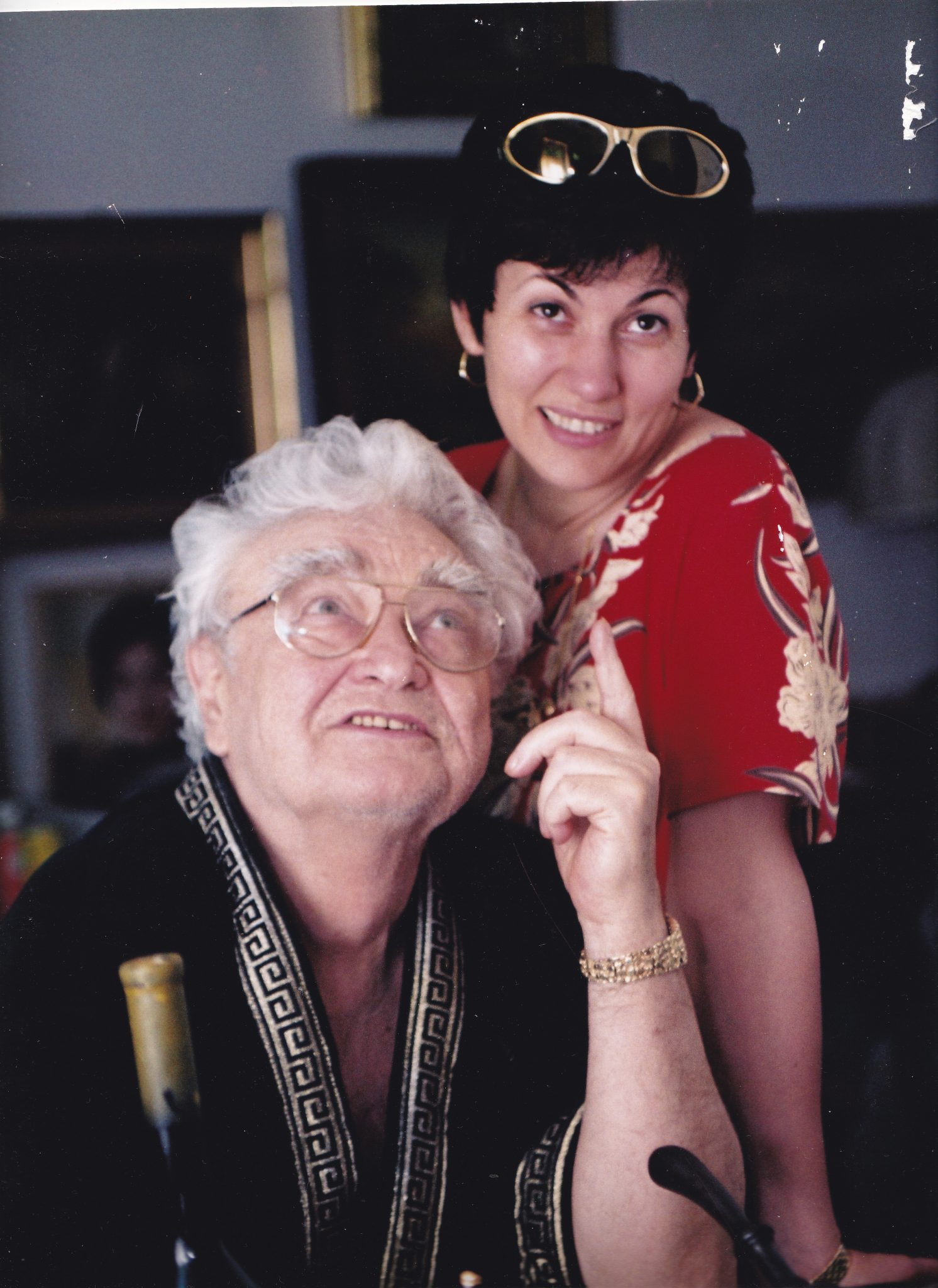
Katalin Szászné Hajdu and Endre Szász
You worked with your husband, Endre Szász, until his death. Is it difficult to find your own voice again after such a close collaboration, which is now a “Katalin Hajdu” and not “Katalin Hajdu and Endre Szász?”
This is something completely different. When I paint as Katalin, I have an independent voice, I create what I feel with the intention that something inspires me and I paint it as Katalin Hajdu. My style has always been very different from Endre Szász’s style and it still is. However, when I want to make an adaptation, I continue the “Brand Endre Szász” by keeping his style, using or adapting his works. I consider this as a creative work, equivalent to my own creation. Perhaps I could compare it to a family business that is carried on by the family members. Sometimes I take a motif from a painting, do not change it, only adapt it to the requirements of clothing, jewelry, or the particular object with which I work, without the motif losing its essential character. With me, it was often so that I painted and then held a longer or shorter break. My husband would then ask me, “Why did you stop, why don’t you paint anymore?” Then when I started painting again, he said it was interesting how much I improved during the break. Not consciously, but a new voice emerged in me nonetheless. He also noted that the mood of our colors had changed in a similar way. Not only has he influenced my art, but I was influencing his, even though we were working completely independently, in separate studios, with different palettes and colors.
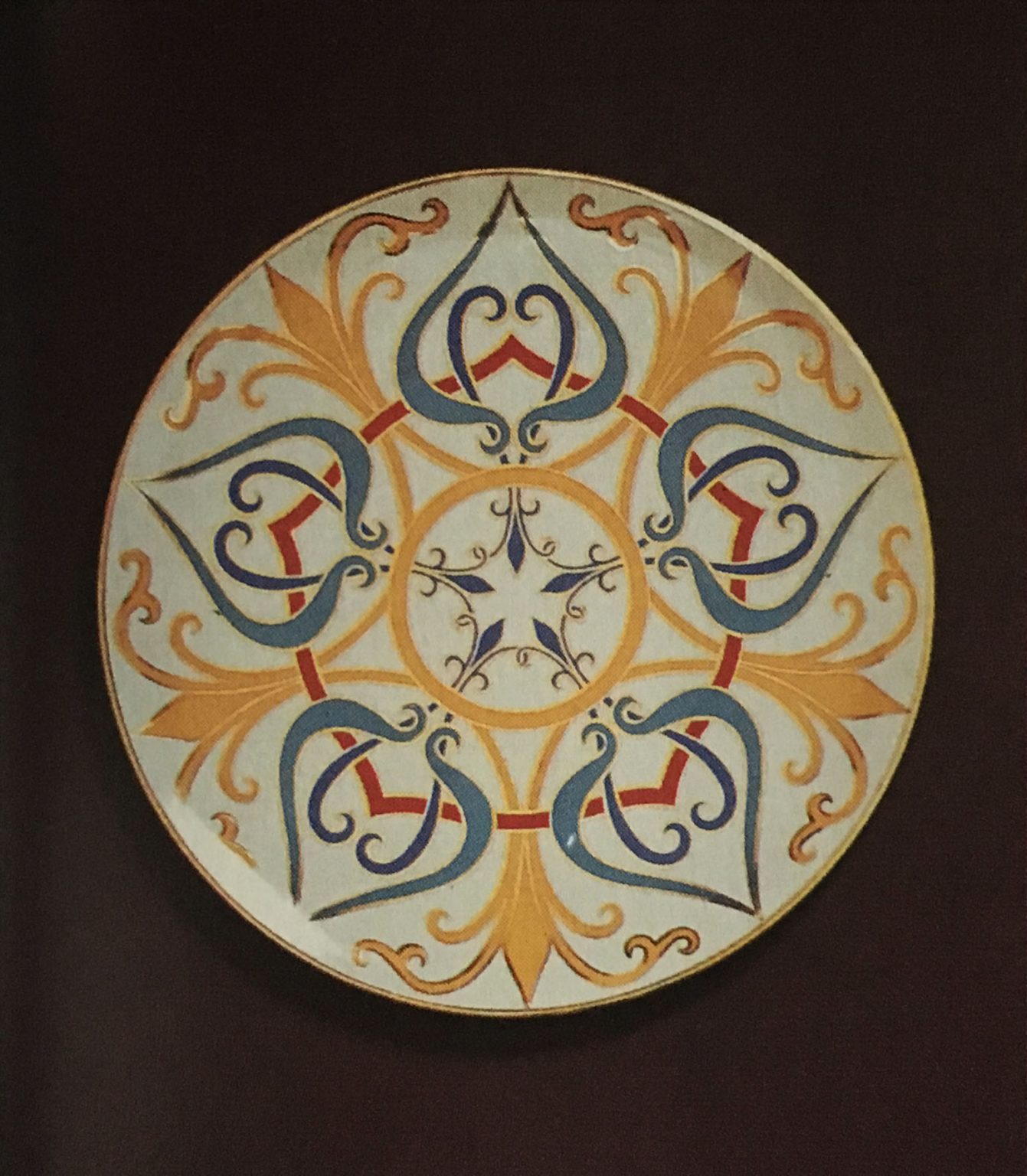
Katalin Szászné Hajdu: Porcelain ornament plate with lily and heart motif
What are you currently working on? Are you planning an exhibition at home or abroad in the near future? Where can we see your works?
Before the coronavirus pandemic, we organized fashion shows, even fashion shows with exhibitions. Now I plan to organize temporary exhibitions in Várda again in a month. We will show not only my works but also those of other artists. I also provide exhibition material under certain conditions, but I do not have much capacity for that anymore. I have established the Endre Szász Foundation (Szász Endre Életművét Gondozó Közhasznú Egyesület), which aims to present and maintain the artistic life’s work of Endre Szász. Here I write and implement competitions, which takes a lot of time. We also run the castle museum in Várda. Actually, one person would be needed for each of these tasks: I am also a creator myself, I edit Endre Szász’s works, not to mention the cataloging and publicity work that we also do. My work is very diverse, but they are all creative tasks. Homeopathy is also very close to my heart. I have been seriously involved in it for more than a decade, was a student of a university course for a few years, and since then I have enthusiastically attended various national and international online courses.
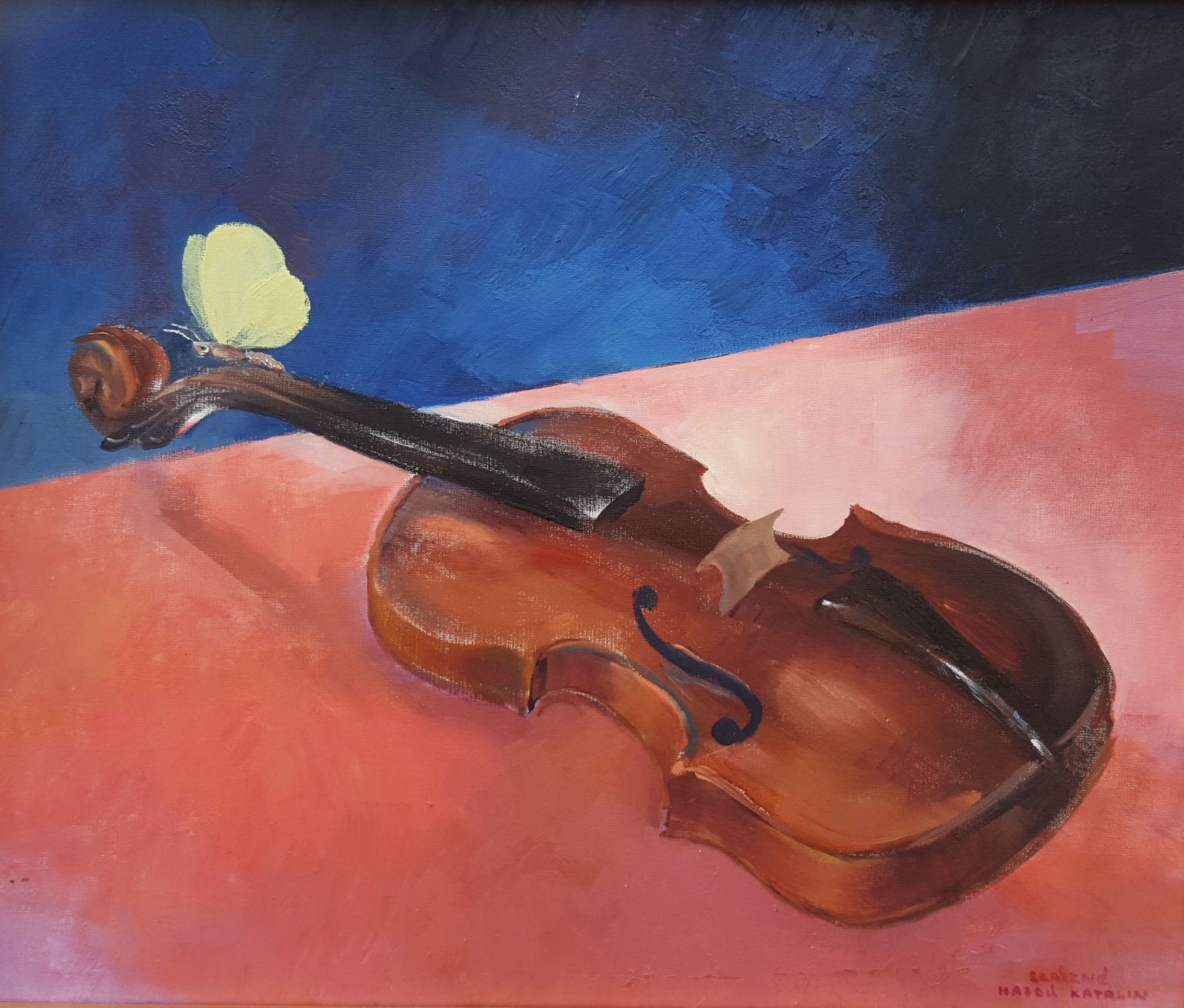
Katalin Szászné Hajdu: Violin
What advice would you give to young artists who are at the beginning of their careers?
This may sound strange, but I have no message. Everyone should find their own voice and follow what they feel inside. Do not listen to others and do not copy or imitate anyone. Do not follow fashion trends, young artists, they are always fleeting and you run the risk of becoming infatuated with something and getting stuck in it. Everyone should try to express their own individuality, but only if they really enjoy creating. If not, they can become a bitter person. And this is true not only for artists but for everyone. If you do not do what you love, or at least part of it, you will be unhappy. I think the same is true for artistic trends, that everyone should find their own field and individual style.
The featured image and pictures in the article were kindly provided by Katalin Szászné Hajdu.